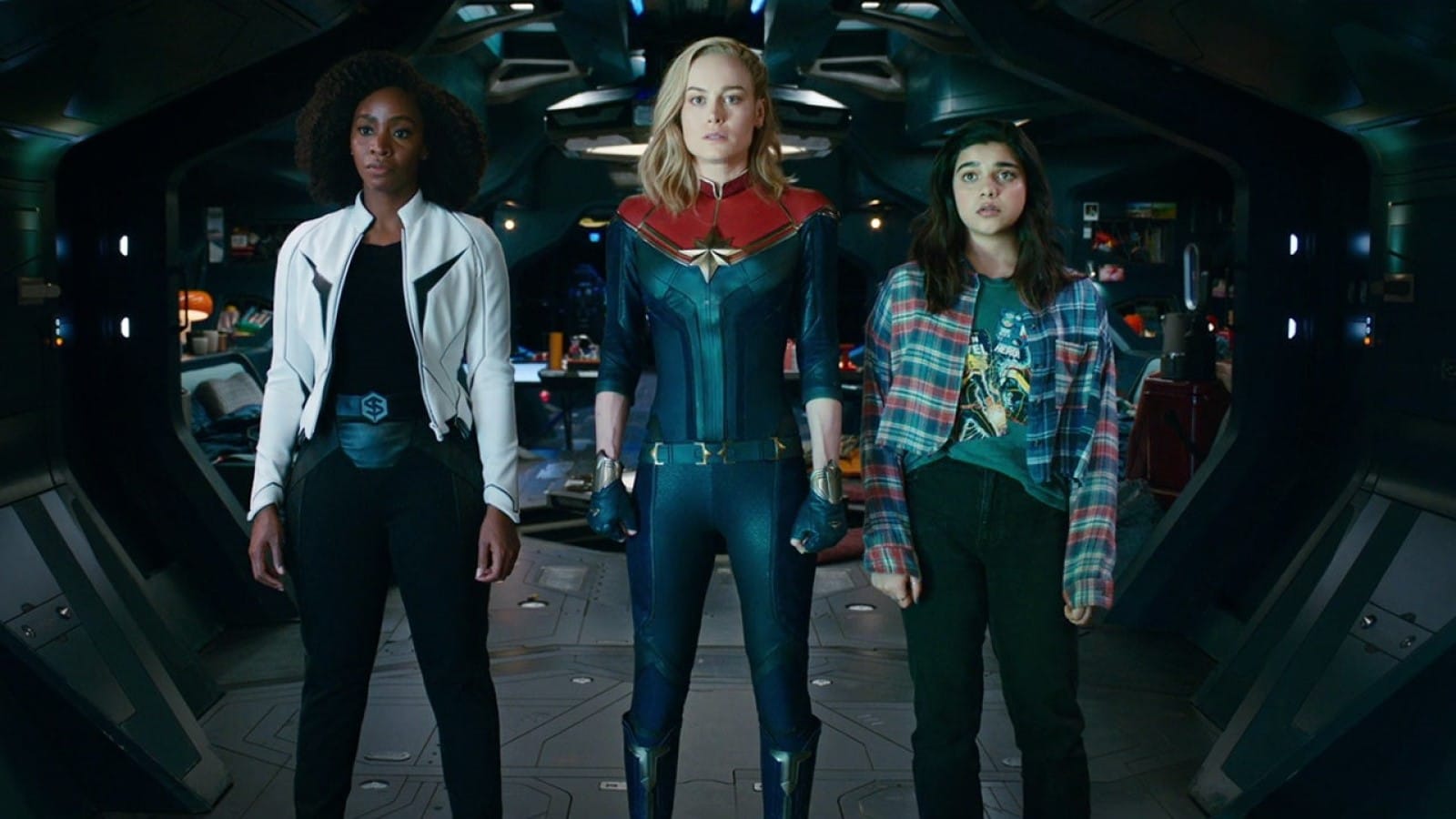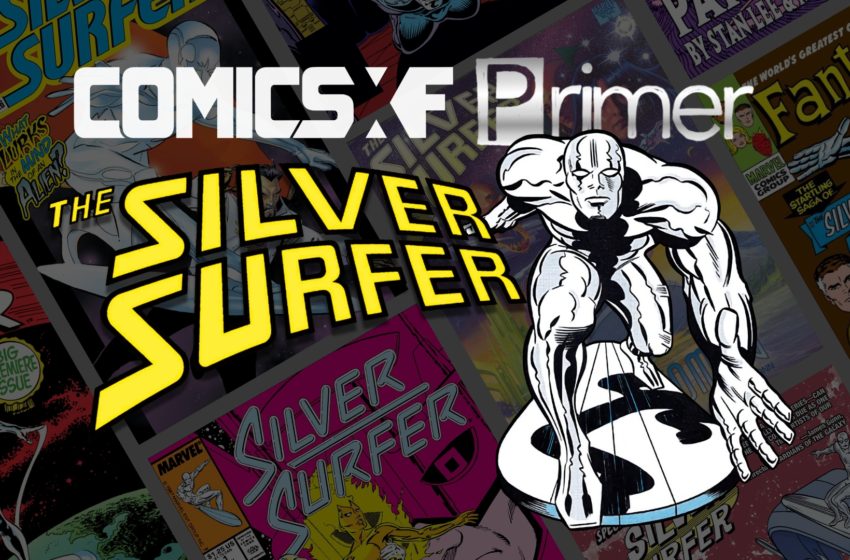Kurt Wagner is many things. He’s a mutant born in Bavaria with unique physical features: blue fur, a prehensile tail, pointed ears, fangs, and three-fingered hands and feet. He’s a teleporter and a trapeze artist. He’s the adopted son of a Romani sorceress and the biological son of a shapeshifter and a big red jerk who’s either a mutant or a demon or maybe a mutant demon. He’s one of the X-Men franchise’s most persecuted mutants and one of its most optimistic. He’s Catholic and a sexy-as-hell swashbuckler. He’s a pilot, a medic, and a mentor. Most importantly, he’s the soul of the X-Men.
Kurt hones his physical gifts in a circus before the crimes of his foster brother turn the townspeople of Winzeldorf, Germany against him. After Professor Xavier rescues Kurt from a torch and pitchfork-wielding mob, he becomes a core member of the “second generation” X-Men team, maturing into a leader before grave wounds land him in a coma. He eventually recovers and helps form the UK-based superteam Excalibur, becoming its longtime leader. During this time, he also learns he’s the son of Mystique, who abandoned him as a baby.
When Excalibur disbands, Kurt returns to the X-Men, where his life endures many upheavals. An anti-mutant cult brainwashes him into believing he’s a priest. He meets his father, Azazel, and his alternate universe daughter, Nocturne. And he dies, giving his life to protect the “mutant messiah” Hope Summers. As X-Men are wont to do, he also overcomes death, saving the spirit realm and earning a new body by sacrificing his soul. It says a lot about Kurt Wagner that losing his soul doesn’t change who he is. The best versions of Nightcrawler are centrally defined by empathy, hard-fought joy, and aspirational heroism.

Dave Cockrum originally pitched a version of Nightcrawler as a member of a Legion of Superheroes-related team before finding him a home among the “All-New, All-Different” X-Men. The character debuted alongside Storm, Colossus, Thunderbird, and Sunfire in Giant-Size X-Men #1 (1975), written by Len Wein with art by Cockrum. But Chris Claremont contributed crucial characterization, helping transform Kurt from an angry misanthrope into a man who navigates trauma through humor while embracing his unique appearance. Relevant to the latter, Kurt’s first-ever thought bubble proves prophetic. While being chased by the angry mob on page one of Giant-Size #1, he thinks: “Monster, is it? The fools! It is they who are the monsters—they with their mindless prejudices!” In effect, Kurt states the thesis of a more politically conscious era of X-Men comics, which would see Marvel’s mutants become a dominant multimedia franchise. It is Kurt’s subsequent decision to fight hate with love that makes him the soul of the X-Men.

In Uncanny X-Men #165 (1983), Nightcrawler was revealed to be Catholic. In most comics, he practices his faith rather than preaching it, modelling his personal values through his actions. In the years since Excalibur (1988-1998), Kurt’s character development has sometimes languished and been plagued by inconsistency. Yet he continues to be a popular member of the X-Men franchise, starring in three solo series (2002, 2004, and 2014) and several one-shots, with central roles in additional limited series. Creators often spotlight the character when they want to inject humor, reckon with moral quandaries, and explore the deeper meaning of the mutant metaphor.
Through his fantastical difference, Nightcrawler represents diverse experiences of otherness. His difference also informs his empathy. While most mutant bodies change at puberty, Kurt was born different. He’s never been able to pass for human, and before long, doesn’t want to. In Uncanny X-Men #130 (1980), he rejects the “image inducer” that offers a human disguise, a decision that goes against the assimilationist politics of that era’s Professor X. Comics readers quickly latched onto Nightcrawler’s embrace of being different. A letter attributed to Carolyn Amos, appearing in Uncanny X-Men #149 (1981), memorably extols Kurt’s virtues, observing “There aren’t too many characters—in books, comics, movies, or elsewhere—that us real-life ‘misfits’ can lock onto to form or celebrate positive images of ourselves.”

Forty years later, superheroes with visibly different bodies who are both body positive and sex positive remain rare, which is why Nightcrawler remains special for many fans. When Kurt’s faith is convincingly integrated with his other defining traits, he’s also an important example of a progressive Catholic. Kurt enjoys sensual delights, respects powerful women, dates witches and aliens, has (at least) two moms, and counts among his best friends a queer Jewish girl, a stab-y atheist, and a woman worshipped as a goddess. He is built to question stereotypes and orthodoxies.
Loving any X-Men character is often an exercise in loving their potential beyond what’s on the page. That’s no less true of Nightcrawler. But Kurt Wagner arguably lives up to his potential more often than most. The stories in this primer are proof.



Gold
Nightcrawler

1985 – 1986
- Nightcrawler Vol. 1 #1-4
- Dave Cockrum
- Dave Cockrum
- Paty Cockrum
- Jim Novak
The Plot
Nightcrawler regales Kitty Pryde and Illyana Rasputin about a past adventure, prompting the girls to use the Danger Room to reconstruct a dimensional portal known as the Well at the Center of Time. But they do it a little too well—the portal becomes real, and swallows Lockheed and Kurt! So begins a cross-dimensional adventure in which Kurt becomes a pirate, battles a sorcerer shark, wins the favor of a beautiful princess, and meets mini armies of himself. It’s a race against time to get Kurt and Lockheed back before they have their tails handed to them—or before Kurt decides he wants to keep living the pirate life!
Why We Love It
There are probably people out there who love Nightcrawler and don’t love this miniseries. But the author of this primer is also very confident this miniseries is one of the most loving love letters Kurt Wagner has ever received. Dave Cockrum dearly adored who Kurt became, imagining himself as the character in the stories he wrote and drew. It’s subsequently easy to imagine Dave and Kurt co-authoring this miniseries over a boozy weekend and being incredibly proud of how perfectly they captured their shared perception of reality.
This miniseries establishes key features of Nightcrawler’s character that many later comics call back to. Kurt sword-fighting pirates with both hands and his tail while sporting a devilish grin? Check. Kurt as a shameless flirt? Check. Kurt as someone who feels at home in the strangest places? Check. This miniseries also presents Kurt as a thoughtful and tentatively self-reflexive character, capable of rolling his eyes at the ridiculousness of a life he loves anyway, because Kurt’s brave enough to love being ridiculous.
This miniseries also features Kurt getting attacked by an army of horny female versions of himself, having a sword fight with a shark, dodging the six-shooters of a cowboy dinosaur, and freeing himself from a tentacle monster by tickling it with his tail. All of these things are perfect.
Don’t have a local comic shop?
Consider supporting ComicsXF by using these links:
Silver
What Happened to Nightcrawler?

1986
- Uncanny X-Men Vol. 1 #204
- Chris Claremont
- June Brigman
- Whilce Portacio
- Glynis Oliver
- Tom Orzechowski
The Plot
In the wake of an encounter with the reality warping Beyonder, Nightcrawler finds himself questioning his purpose. He spends the night brooding in the rain on the balcony of his girlfriend Amanda Sefton’s condo, has brandy for breakfast, then fights with Amanda, accusing her of using magic to make him love her. Amanda storms out, but Kurt’s not alone for long. He follows a dump truck into Arcade’s Murderworld, where he gets his groove back saving a beautiful yet decidedly modern princess.
Why We Love It
In this story, Kurt is reckless, depressed, and even cruel. He’s also heroic, joyful, and sympathetic. But these things are all connected. Kurt navigates life through stories. Consequently, his crisis of faith involves a series of performances that function, for the reader, as metacommentary. Case in point, in an effort to seduce Amanda, Kurt re-enacts a scene from the ’85 miniseries. But the context has changed. Amanda sees through his obvious deflection and turns away in disgust. After Amanda leaves, Kurt howls from the rooftops, surrendering to the Winzeldorf mob’s vision of him; if he’s not masculine or sexy, he’s not heroic or even human. Or so he thinks, but you can understand why; Kurt’s origin proves the precarity of his humanity, and the Beyonder proves the precarity of everything.
Kurt restores his faith by successfully performing his favorite story, saving a princess within a world that’s dangerous but lacks complexity, where good and bad are clearly defined. But this clarity is—literally—an illusion. The princess is charmed by Kurt but also calls out his macho crap. And the only person Kurt kisses is a hologram of Arcade in female drag. Kurt’s triumph is also short-lived. Seven issues later, he’ll suffer grave wounds in the “Mutant Massacre,” forcing him off the team. This story is a tragic and fascinating exploration of what makes Nightcrawler tick, negotiating his internal conflicts as well as any story ever has.
Don’t have a local comic shop?
Consider supporting ComicsXF by using these links:
Warlord

1989
- Excalibur #16
- Chris Claremont
- Alan Davis
- Paul Neary
- Glynis Oliver & Mark Rockwitz
- Tom Orzechowski
The Plot
Amid Excalibur’s “Cross-Time Caper,” Nightcrawler falls from the team’s dimension-hopping train onto the deck of a spacefaring pirate ship and into a replay of his favorite fantasy, defending the honor of a beautiful princess against an army of blue-skinned brigands. The grateful princess welcomes Kurt into her luxurious boudoir, but things are not what they seem. One person’s pirate is another person’s freedom fighter and pretty faces hide dark secrets. Will Kurt shake his besotted languor in time to save his teammates from a fate that’s equally wet and sticky but decidedly less fun?
Why We Love It
Because Kurt has sex in a pool and on a round bed and licks wine off a woman’s bare skin. What else do you need to know?
For some of you, that’s a rhetorical question, but for the rest of you—these things matter because Nightcrawler’s sexiness matters. And his sexiness matters because characters with non-normative bodies rarely get to be sexy in superhero comics. Admittedly, Kurt is a very pretty monster. But within the storyworld at hand, he’s often perceived as monstrous, and his sexiness heroically defies that prejudice.
This comic also explores what makes Kurt sexy. There’s the obvious stuff: the lean muscles, the velvety fur, the sensuous tail, the languorous poses, rendered delectably by Alan Davis. But he’s also sexy because he’s accessible, and he’s accessible, in part, because of how this story plays with gender. Kurt inhabits a traditionally masculine role as a hyper-capable swashbuckler then becomes submissive in a connotatively feminine way—and enjoys it. There are consent issues involved that shouldn’t be overlooked; the princess is a succubus. But while Kurt expresses remorse about leaving his friends in the lurch, he doesn’t seem to experience sexual shame; in the next issue, he attends a Bacchanalian orgy. In the humble opinion of this primer: sexy Kurt is best Kurt.
Don’t have a local comic shop?
Consider supporting ComicsXF by using these links:
Charm School

2015
- Amazing X-Men Vol. 2 #13
- James Tynion IV
- Jorge Jiménez
- Jorge Jiménez
- Rachelle Rosenberg
- Joe Caramagna
The Plot
The usual emotional turmoil of teenagerhood is compounded when you’re a gay mutant with green lizard skin, living in a world where other mutants can use your doubts and fears to create destructive illusions. In other words: Lady Mastermind exploits Anole’s youthful angst to wreak havoc on the streets of New York. Anole will need both Northstar and Nightcrawler to help him see the truth—and make it to his date on time.
Why We Love It
In twenty-first century comics, Nightcrawler’s religion hasn’t always been handled with care. In the early 2000s, he became a priest off-panel, which was later revealed as brainwashing by the anti-mutant Church of Humanity, who had an evil scheme to install him as the pope (it was a whole thing). For some fans, it became important to clarify Kurt’s values. And guest writer James Tynion IV uses this story to do that.
In this comic, Northstar fears Kurt doesn’t accept him, which is understandable given the prejudice Jean-Paul has faced and the fact his twin sister Aurora was traumatized by her experience attending a conservative Christian school. But Kurt’s faith is a bridge, not a gate; in a key scene, he tells Jean-Paul he knows, based on the fact he’s been to actual heaven, that Marvel’s first openly gay superhero is welcome there. The intersectional empathy between Kurt and Anole further emphasizes the inclusivity of Kurt’s body and sex positivity; Kurt connects with Anole’s experience of physical difference to encourage the younger X-Man to follow his heart. This comic’s unapologetic wholesomeness is a balm for bruised souls.
Don’t have a local comic shop?
Consider supporting ComicsXF by using these links:
Bronze
The Gift

1987
- Classic X-Men Vol 1 #9
- Chris Claremont
- John Bolton
- Glynis Oliver
- Tom Orzechowski
The Plot
Jean Grey saved the X-Men. Now she’s in the hospital, hovering between life and death. Her teammates are with her, waiting and wondering. Including Nightcrawler, hiding behind a human disguise and feeling the weight of his helplessness. But hope finds its way to his heart, from an unlikely source—a mysterious young misanthrope who needs a laugh as badly as Kurt.
Why We Love It
On its surface, this is a silly vignette about Kurt teaching a boy to juggle. But Nightcrawler’s best moments of silliness are actually serious, because that’s the nature of Kurt. Good writers remember Kurt’s humor and optimism are responses to pain and trauma. That’s what makes him identifiable and aspirational, to us and to the boy, Daniel, he befriends in this story. Claremont’s indulgent prose, Bolton’s spare, thoughtful art, and Oliver’s moody colors provide a tonal richness that perfectly captures the power of Nightcrawler and comics in general, offering new ways of seeing that are also deeply familiar. “Magic isn’t a matter of power,” Kurt tells Daniel. “It’s the creation of a state of mind that becomes a state of being. So convincing—and, when it’s done right, wondrous—a game of ‘let’s pretend’ that the audience willingly, eagerly believes your illusions are real.” Here, Kurt’s speaking for the writer and artists, describing—and celebrating—the healing power of fantasy. He’s also speaking to himself about himself. In the end, illusion is a vehicle of truth, as Daniel learns Kurt both is and isn’t what he seems. And Kurt learns something similar about Daniel, who, like Kurt, both is and isn’t real.
Don’t have a local comic shop?
Consider supporting ComicsXF by using these links:
The Quest for Nightcrawler

2014
- Amazing X-Men Vol. 2 #1-5
- Jason Aaron
- Ed McGuinness
- Dexter Vines
- Marte Gracia
- Joe Caramagna
The Plot
Nightcrawler is dead. But that’s never stopped an X-Man from saving the world—or the afterlife. When Azazel threatens the heavenly realm, his son is there to stop him. But he’ll need a little help from his friends. Wolverine, Storm, Northstar, Firestar, Iceman, and Beast follow Kurt to heaven, hell, and back. They also battle pirates. Lots and lots of pirates. Everyone ends the story alive, but resurrection has a cost. Will Kurt be able to bear it?
Why We Love It
Long before Krakoa, superhero deaths were already functionally temporary. Between his death in the “Second Coming” event and his resurrection in this story, Kurt was off the board for just three years. But for the character’s fans, it felt like a lifetime, made longer by repeated editorial insistence that Kurt’s death was “for real.” That heartache makes this story’s unapologetic fanservice land that much harder. Aaron and McGuinness give Kurt’s reunions with Ororo, Logan, and Hank the magnitude they deserve within a swashbuckling love letter to Dave Cockrum’s enduring love letter to Kurt. This story also heroically attempts to make something serviceable from one of the most hated X-Men stories of all time: 2004’s “The Draco,” in which Kurt learns he’s the son of the demon Azazel. While this story doesn’t retcon “The Draco,” it does feature Kurt punching Azazel in the face while snarling, “I am not your boy!” Which is the next best thing.
Don’t have a local comic shop?
Consider supporting ComicsXF by using these links:
The Amazing Nightcrawler

2019
- Age of X-Man: The Amazing Nightcrawler #1-4
- Seanan McGuire
- Juan Frigeri
- Juan Frigeri
- Dono Sánchez-Almara
- Travis Lanham
The Plot
Nate Grey remakes the world so the X-Men are no longer outcasts. They become beloved heroes, living “perfect” lives. But there’s a catch. In this brave new world, biological family connections and sexuality are forbidden. That presents a problem for Kurt Wagner and Meggan Puceanu, who are recast as Hollywood stars with no memory of their past but can’t shake a lingering attraction. Will love conquer all? Or will it force a terrible sacrifice?
Why We Love It
Back in the Excalibur days, Kurt and Meggan were two parts of a long-running love triangle. There, the closest they came to actualizing their attraction was an iconic almost-kiss. Here, they do considerably more, even donning devilish masks to visit a queer-coded underground club for mutants who share their forbidden desires. Since this comic is relatively recent, this primer won’t reveal the central twist. But suffice to say it’s a doozy, upping the ante on Kurt and Meggan’s rebellion. In addition, McGuire uses the context of Kurt running a movie studio to explore the character’s defining romanticism, which makes him want to believe in perfect worlds but also makes him ideally equipped to see through them. Most importantly, this series foregrounds Nightcrawler as a great character to explore relationships between sexuality and heroism, which are too often treated as incompatible. We need more comics where false utopias are toppled by Kurt Wagner’s heroic magnetism.
Don’t have a local comic shop?
Consider supporting ComicsXF by using these links:
Nightcrawler investigations

2004
- Nightcrawler Vol. 3 #1-6
- Roberto Aguirre-Sacasa
- Darick Robertson
- Wayne Faucher, Jimmy Palmiotti, & Rodney Ramos
- Matt Milla
- Cory Petit, Chris Eliopoulos, & Rus Wooton
The Plot
Nightcrawler as a paranormal investigator? Stranger things have happened. And will, when Kurt agrees to look into the seemingly mystical disappearance of children from a New York orphanage, followed by a spooky (and slimy) encounter with vengeful subway-dwelling ghosts. Thankfully, Kurt’s got a knack for attracting allies, including deeply smitten night nurse Christine Palmer. It’s Kurt plus new and old friends and lovers versus demons and ghosts for the soul of NYC—hope they survive the experience!
Why We Love It
These days, most people probably know Aguirre-Sacasa best as the creator of Riverdale (2017-present), while Robertson is best known as the co-creator of The Boys (2006-2012). But before they did either of those things, they teamed up for a reboot of Kurt Wagner’s world that doesn’t always live up to its potential, but still manages to remain memorable many years later. This series achieves a “lived-in” feel by grounding Kurt in realistic (albeit magically imbued) settings. He spends most of the series in casual clothes and actually does some old-fashioned investigating. He also goes on dates to Broadway musicals and has meaningful conversations with those friends and lovers, including Storm, with whom he shared a “will they or won’t they” during this era. Because this is a superhero comic about a mutant thoroughly versed in dimension-hopping, there are also casual jaunts to Limbo, where Kurt trades barbs with Amanda Sefton’s sassy snake bodyguards. For readers who care about such things, it should also be noted this is a thoroughly gaze-y series; in multiple shower scenes, blue fur abounds.
Don’t have a local comic shop?
Consider supporting ComicsXF by using these links:
Crystal Warrior

1983
- Saga of Crystar, Crystal Warrior #6
- Mary Jo Duffy
- Ricardo Villamonte
- Dave Simons
- Andy Yanchus
- Janice Chiang
The Plot
Nightcrawler is only slightly late to his date with Amanda Sefton, who warns him that her apartment is buzzing with magical energy and Kurt definitely shouldn’t teleport. But you can’t stop a Nightcrawler from BAMFing, which sends Kurt to the world of Crystalium, where he finds himself embroiled in local conflicts both seductive and strange. But this unexpected jaunt proves fortuitous. The Crystal Warriors need Kurt’s help against the latest machinations of the evil Magma Men!
Why We Love It
Is this largely forgotten comic book based on a largely forgotten toy line a deep cut? Maybe. But you don’t hire a Nightcrawler expert to write a Nightcrawler primer without expecting one of those! Besides being a ton of fun, this story has some underappreciated historical significance. It’s the first Nightcrawler story written by a woman, Mary Jo Duffy, who also happened to pen the first published Nightcrawler fan letter, appearing in X-Men #98 (1976) in response to the character’s debut in Giant-Size #1. Back in ’76, the creative team rebuffs Duffy’s assertion that Kurt is “cute.” But Mr. Wagner’s fans wouldn’t stand for that. The next several years of comics feature many letters calling back to Duffy’s, assuring Claremont and Co. that Kurt was, in fact, cute (not to mention “attractive,” “dreamy,” and “visually stimulating”).
Duffy makes the most of writing her favorite fuzzy elf. This is a deliciously deviant comic book, in which Kurt BAMFs from one titillating tribulation into another, including suggestive encounters with a red devil lady who’s very fond of his tail and a blue woman in a crystal bikini who convinces our hero to stay a while. It also opens with a dynamic training sequence that maximizes Kurt’s flexibility. If you enjoy wonderfully weird comics (and if you like Nightcrawler, you probably do), this one’s worth tracking down.









